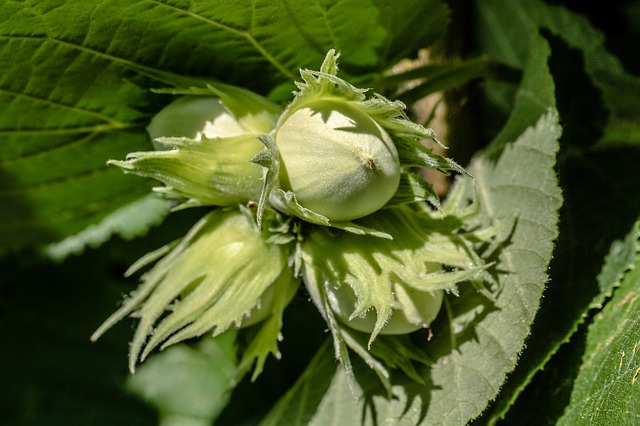June 21, 2022
By Lynda Kiernan-Stone, Global AgInvesting Media
Over the course of a brief two-year period, Oklahoma-based Raptor Ag has completed a series of deals with a range of institutional investors including family investment offices and Raptor Ag, totaling approximately $60 million for the development, or the acquisition, of hazelnut orchards in Oregon, and pecan orchards in southern Oklahoma.
Included in previously announced deals, Raptor Ag successfully raised $27.3 million in July 2020, stating that this funding followed closely after an additional $7.5 million raised through a round backed by a single investment firm, and that it intended to close on another $6.1 million in the coming weeks.
Based in Edmond, Oklahoma, and with field offices near Corvallis, Oregon, Crabtree, Oregon, and Marietta, Oklahoma, Raptor Ag was founded in 2016 by Raptor Ag partner and CEO Chris Eubanks, along with Dustin Faulkner, and Jason Perkins, with the initial goal of becoming the largest hazelnut producer in North America. Since its launch, the group has diversified into pecans, and stated that it is open to the possible expansion into other permanent and annual crops.
The group focuses on high-quality land that includes significant water rights. It then adheres to intensive management strategies for its orchards, which are all on a drip line fertigation program overseen by its full-time operations staff.
“We continue to have strong interest from our investing partners to grow our hazelnut and pecan operations,” said Chris Eubanks, partner and CEO, Raptor Ag. “Our business has been fortunate to maintain a healthy growth rate during a challenging labor and supply chain environment.”
Turkey is the dominant global hazelnut producer, accounting for 75 percent of the world’s supply, while the U.S. accounts for about 3.5 percent of global production. Of total U.S. production, 99 percent of the country’s hazelnuts are grown in the Willamette Valley in Oregon, where they have been cultivated since the mid-1800s.
High prices and consumer enthusiasm have put a spotlight on the often-overshadowed hazelnut (we’re looking at you almonds), however, a key driver of growth for hazelnut production has been the introduction of resistant cultivars in the late 1990s and early 2000s. The release of a new variety developed through the natural breeding program at Oregon University called Jefferson is not susceptible to the Eastern Filbert Blight that attacks previous strains, and has been a factor in driving the state’s hazelnut industry into a period of growth.
Currently holding more than 3,000 acres of hazelnut orchard land in Oregon’s Willamette Valley, of which approximately 2,000 acres are in production, Raptor Ag has established itself as the leader of the North American industry. A position from which it continues to scout and evaluate properties to further grow its business.
When the group began expanding into pecans in 2021, it targeted a specific region in the state of Oklahoma based on optimum climatic conditions and available water resources. It began with the purchase of 1,300 tillable acres, of which the group was able to plant about 1,040 high-density acres in January and February, all of which are under drip line fertigation.
Plans are in place to plant the remaining acreage in January 2023, with intentions to continue developing pecan orchards in the region – the majority of which investors have already partnered with Raptor Ag to back development.
“With our latest 1,040-acre pecan planting, in the past five years, Raptor Ag has now executed the largest pecan planting in one season by a single grower, according to industry veterans, along with the largest single-season hazelnut planting in that industry’s history – 1,000 acres in the winter of 2017-18,” noted Eubanks.
With a consumer shift toward more plant-based diets, the tree nut market has been gaining strength for years, and it shows no signs of slowing down. Increasing awareness of the health benefits of nuts has translated into continuous demand. From a base value of US$42.7 billion in 2021, the global tree nut market is expected to grow at a CAGR of 11.1 percent between 2022-2030, with the U.S. tree nut market forecasted to grow at a CAGR of 8.3 percent.
“This amazing growth is a testament to our team and the vast amount of experience, skill and hard work they’ve put into our various projects over the past several years,” said Eubanks. “Raptor Ag continues to be very optimistic in the tree nut market, as the desire for plant-based protein and healthy fats gain popularity.”
~ Lynda Kiernan-Stone is editor with GAI Media, and is managing editor and daily contributor for Global AgInvesting’s AgInvesting Weekly News and Agtech Intel News, as well as HighQuest Group’s Unconventional Ag. She can be reached at lkiernan-stone@
*The content put forth by Global AgInvesting News and its parent company HighQuest Partners is intended to be used and must be used for informational purposes only. All information or other material herein is not to be construed as legal, tax, investment, financial, or other advice. Global AgInvesting and HighQuest Partners are not a fiduciary in any manner, and the reader assumes the sole responsibility of evaluating the merits and risks associated with the use of any information or other content on this site.

Let GAI News inform your engagement in the agriculture sector.
GAI News provides crucial and timely news and insight to help you stay ahead of critical agricultural trends through free delivery of two weekly newsletters, Ag Investing Weekly and AgTech Intel.




